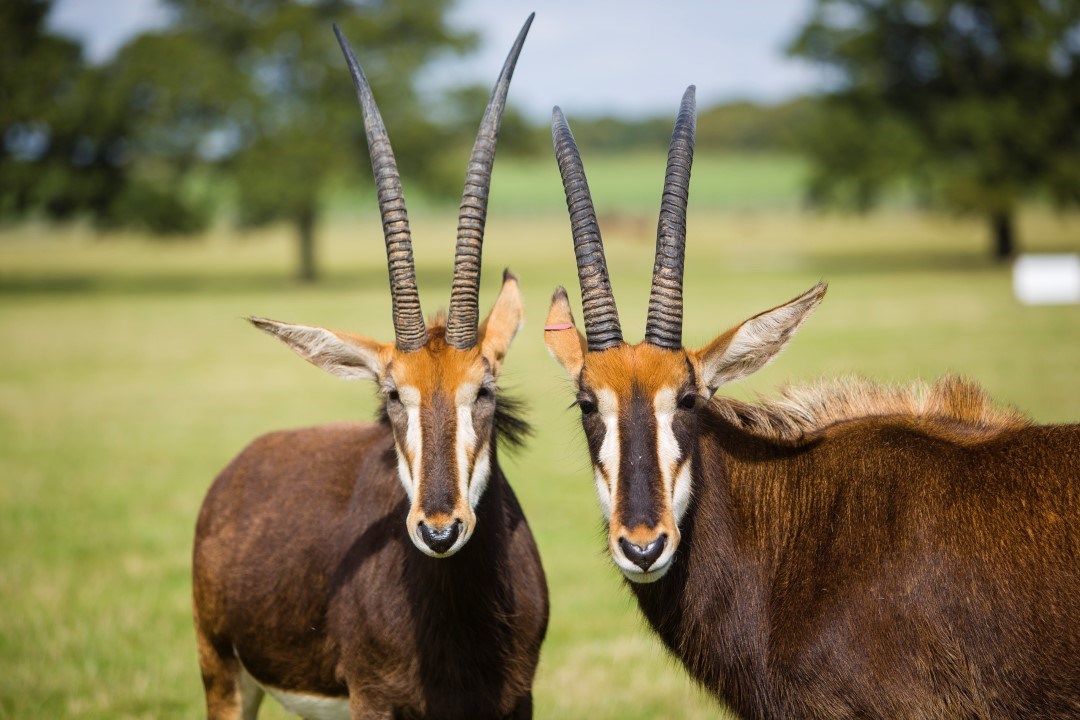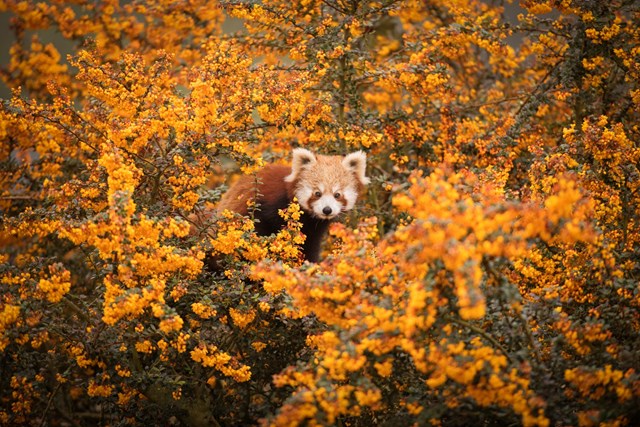
Overview
The herd of Sable at Woburn Safari Park can be seen in the savannah section of the Road Safari. They can be seen roaming freely in the large exhibit with a number of other African species including Grevy's zebra, Southern white rhino and common ostriches, among others.
In the summer months, the herd of sable will stay out in the section with access to shelter within the Antelope House. During the colder months, these animals will stay indoors overnight. The Antelope House is a facility that enables the management of numerous endangered and critically endangered species of ungulates.

All about us
| Distribution: | Africa |
|---|---|
| Habitat: | Savannah woodland and grassland |
| Height: | 3.9 - 4.7 ft at the shoulder |
| Weight: | 190 to 270 kg |
| Gestation Period: | 9 months |
| Lifespan: | 17 years |
| Threats: | Loss of habitat and poaching for their meat. |
About Us
Scientific name: Hippotragus niger
The sable antelope is a large species of antelope with a vibrant coat and distinctive white facial markings. This large species is also the national animal of Zimbabwe.

The colour of the Sables coat is controlled hormonally. New born calves have a camouflaging sandy brown coat and as they grow and achieve status within a herd their coat will continually darken.
The coat of a mature female will range in colour from a light chestnut brown to a dark brown depending on their status within the herd. The coat of an alpha male is either a very dark brown or jet black in colour. Any captive castrated males lose their dark colour coat and will remain a light chestnut brown. This sexual dimorphism is said to communicate the age and social status of an individual to others.
Their faces are white with vertical black markings on both sides running from their eyes to their nose and they have a wide dark stripe on the front of their face. They have a thick neck with a stiff upright mane the same colour as their coat. Their rump and the underside of their stomach is white.
Both sexes have long curved horns which arch backwards; these ridged horns are longer and thicker in males and can grow 80 to 165cm in length whilst the females horns can grow 60 to 100cm in length. Sable will use their horns to defend themselves from predators and in fights for dominance.
During the wet season sable will inhabit open woodland feeding from the abundant variety of grasses and leaves but in the dry season they will inhabit grasslands in the search for forbs and green grass which will make up the bulk of their diet.
They are at their most active and will primarily feed during the early hours of the morning and late in the afternoon so they can rest in the shade during the hottest periods of the day. They will visit a watering hole at least every other day to drink and will not travel further than two miles from a water source.
Sable move in maternal herds usually consisting of 10 to 30 breeding females and their young which are led by a single alpha male. The alpha male will fiercely defend his territory, which can range between 300 to 500 metres, from other dominant males. He will mark his boundaries with his urine and faeces to warn off any rivals. He will let subordinate males graze on his territory as long as they are submissive and keep their distance from females. If they try to challenge the authority of the alpha male they will fight and behaviours such as circling, shaking their heads, dropping to their knees and horn wrestling will be used. These fights for dominance can be fatal to the weakest male. At 3 to 4 years of age the young males are driven out of the herd and will often form bachelor herds ranging in size from 2 to 12 individuals. At 5 to 6 years of age these males will establish and defend a territory of their own. When the males select a territory they will ensure that there is good feeding ground available to attract the females.
Mating usually takes place in June and after a gestation period of 9 months a female will give birth to a single calf. The mother will keep the calf hidden in the long grass for approximately two weeks. During the first week the mother will stay close to her calf but during the second week she will remain with the maternal herd returning to feed the calf sporadically. After spending two weeks concealed the calf will then join the maternal herd with its mother. At the age of 8 months the calf is weaned and independent.
Females will breed at two to three years of age and attain rank status in the hierarchy of the herd but males will be pushed out by the alpha male when they reach sexual maturity at three to four years of age.
Sable have been eliminated from large areas of their former range due to the loss of habitat to the expansion of agricultural settlement and livestock. They are also poached for meat and subsistence hunting is also a threat to the sable as their majestic and imposing horns make them a prized trophy animal. Also as the African human population expands, the rate of habitat loss due to pressure for agricultural land and poaching for protein rich meat is likely to cause more problems for the wild Sable population.
When Sable are badly wounded or cornered and unable to flee they will viciously defend themselves using their large sharp horns. By doing this they are able to inflict fatal injuries to predators.
Sable are quite bold, they will often run short distances when startled but will then stop and look back.

